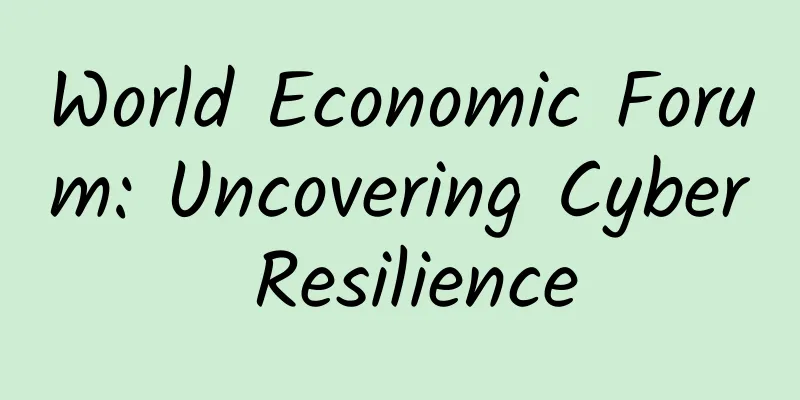World Economic Forum: Uncovering Cyber Resilience

|
Since the beginning of 2020, the World Economic Forum’s Global Risks Report has highlighted cyber risk as one of the top priorities for organizations, and the threat continues to grow. The challenge is dynamic. The evolution of the digital environment and infrastructure, driven by disrupted connectivity and emerging technologies, has greatly complicated the threat landscape and the cyber risks organizations face. Recognizing that individuals and organizations cannot prevent all malicious attacks or cyber failures, while embracing the opportunities presented by digitalization, has led to an increase in cyber resilience. Digital transformation continues to reshape and evolve businesses and governments. An organization’s primary goals are often supported by business processes that rely heavily on digital technologies, often without any analog alternatives. While primary goals and objectives vary between organizations, they always include protecting critical service delivery, stakeholder confidence, and key assets that underpin value and market position. Achieving true cyber resilience is fundamentally a leadership issue and is critical to preserving shareholder value. The report is the result of a collaboration between the World Economic Forum, the Oxford University’s Global Cybersecurity Competence Centre and a working group of industry cyber leaders. They came together to analyse cyber resilience and provide a broader strategic definition that considers a range of risk scenarios that are critical to an organisation’s key objectives. These risks include supply chain disruptions, attacks on trust and reputation, and legal liabilities from data breaches. Organizations must be prepared for major cyber incidents. Continuous investment in cyber resilience capabilities enables organizations to maintain their primary objective in the face of cyber attacks and other cyber incidents, ensuring their growth potential is not compromised. This requires ensuring the ability to resume operations, mitigate the impact on internal and external stakeholders, restore financial and trading performance, protect tangible and intangible assets, and unlock new growth potential. Enterprises need to develop adaptable strategies and share insights with industry peers to cope with complex network environments. Proactive collaboration and continuous learning will play a vital role in providing network resilience.
|
<<: The 10nm Qualcomm Snapdragon 835 is here. Are 821/820 phones still worth buying?
>>: Xiaohongshu is in a dilemma, and Mao Wenchao doesn't have much time left
Recommend
Can soup made with evaporated milk be very nutritious? Who is not suitable for drinking milky white soup?
A few days ago, an online video showing "two...
The Qin Dynasty fell? Maybe it’s not entirely Qin Shi Huang’s fault…|BoLan Daily
The Qin Dynasty fell? Maybe it’s not entirely Qin...
Unexpected! Gutter oil has become a hot commodity for environmental protection|Bolan Daily
Unexpectedly! Gutter oil has become a hot commodi...
What skills does a SEO manager need? SEO supervisor shares management experience!
Feng Chao from Dongguan has been engaged in SEO w...
The archery of Ji Fa in "Feng Shen" has become popular, so it's a good opportunity to talk about archery in ancient and modern China
Recently, the movie "Fengshen" has beco...
Make the map visual! She uses geographic information system to reflect the real world
The ancients used maps to depict spatial informat...
Brand Yuanqi Forest Marketing Data Report
When it comes to sugar-free beverages with “0 sug...
In the future, this material will be used to build houses, which will be warm in winter and cool in summer without air conditioning.
Produced by: Science Popularization China Produce...
How much does it cost to recruit investors for Qiqihar Pipe Fittings Mini Program?
How much is the investment price in Qiqihar pipel...
To transform from advertising planning to e-commerce marketing planning, do these 3 things!
Nowadays, e-commerce platforms led by Tmall are n...
China Brain Health Day | I didn’t expect that reading has this benefit →
We all know that reading can increase knowledge a...
618 Marketing Promotion Plan Creation Guide, 1 Step to Get It Done
Every marketing plan with soul must not be a pile...
Post-90s beauty operator: How I planned an event with 10 million daily traffic in 5 days!
I'm Zongzi, a post-90s planner who combines a...
How to break through the bottleneck of new media operations?
In the past few days, many operations partners ha...
How to plan an event? 6 big steps!
The concept of "organizing an event" ma...









